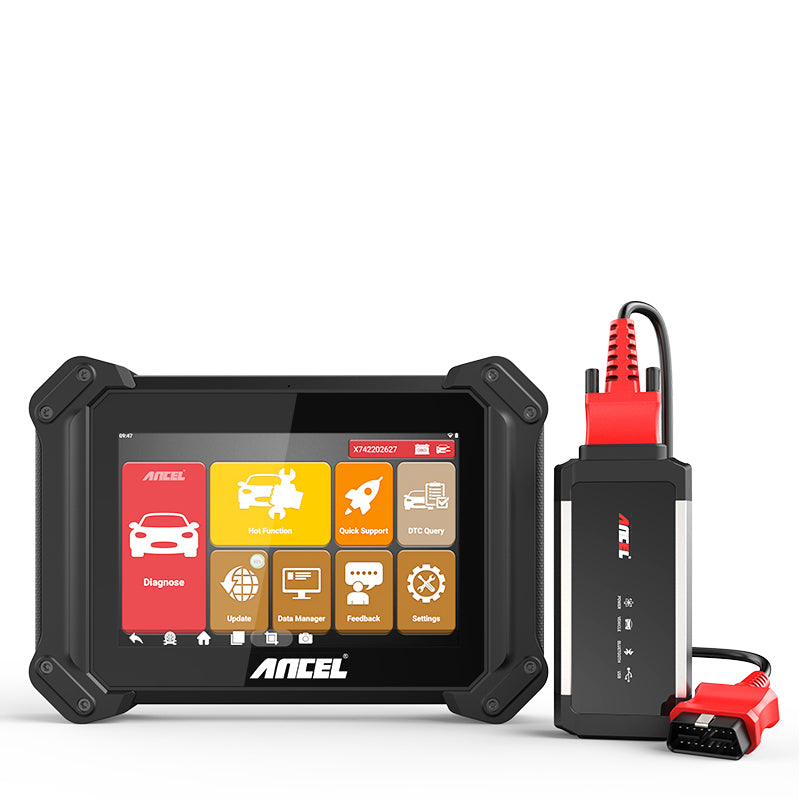Ensuring that your vehicle's emissions systems are working correctly is essential for passing smog checks and maintaining overall vehicle health.
Completing a drive cycle is a critical part of this process, but sometimes driving isn't an option.
Here, we provide a detailed guide on how to complete a drive cycle without driving, using alternative methods to ensure your vehicle is ready for inspection.
What is Drive Cycle
A drive cycle consists of a series of specific engine operations that allow the onboard diagnostic (OBD) system to run tests and monitor the performance of the engine, catalytic converter, evaporative emissions system, oxygen sensors, and other emissions-related components.
Typically, this involves various driving conditions like idling, accelerating, and steady cruising.
However, these tests can sometimes be conducted without driving the vehicle.
Related Reading: What to Do When Your OBD2 Scanner Not Connect to Your Car
Preparations Before Starting the Drive Cycle
Ensure Proper Battery Charge
Make sure your vehicle's battery is fully charged. A weak battery can disrupt the diagnostic process.
Check Engine Light
Ensure the check engine light is off. If it's on, address the underlying issues first.
Warm Up the Engine
The engine should be at normal operating temperature. Let the engine idle for about 5 minutes to reach this state.
Steps to Complete the Drive Cycle Without Driving
Step 1: Initial Idle
- Start the vehicle and let it idle in the 'Park' or 'Neutral' position for about 2 minutes.
- This allows the OBD system to initialize and start monitoring various sensors.
Step 2: Accelerate in Neutral
- With the vehicle still in 'Park' or 'Neutral,' slowly rev the engine to about 2000-2500 RPM and hold it there for about 3 minutes.
- Gradually release the throttle and let the engine return to idle.
Step 3: Simulate Driving Conditions
- Using a load simulator or dyno (dynamometer), you can mimic driving conditions. If these tools are available, follow these steps:
- Gradually increase the RPM to simulate acceleration.
- Hold the RPM steady to simulate cruising.
- Gradually decrease RPM to simulate deceleration.
- Gradually increase the RPM to simulate acceleration.
- Repeat this process for about 15-20 minutes.
Step 4: Extended Idle
- Allow the vehicle to idle for an extended period (approximately 10-15 minutes).
- This helps the OBD system perform various self-tests, including those for the evaporative emissions system.
Step 5: Cool Down Period
- Turn off the engine and let the vehicle sit for about 30 minutes to an hour.
- This cooling period allows the evaporative system to stabilize and complete its tests.
$439.99
Things to Watch Out For
Incomplete Drive Cycle
Ensure each step is completed thoroughly. Skipping steps or not allowing enough time for each phase can result in an incomplete drive cycle.
An incomplete cycle means that not all systems have been adequately tested, which could lead to a failed emissions test.
Battery Disconnect
Avoid disconnecting the battery during this process, as it can reset the OBD system and require the drive cycle to be restarted.
If the battery is disconnected, the OBD system loses its stored readiness data, making it necessary to repeat the entire drive cycle.
Unresolved Faults
If there are any active fault codes, address them before starting the drive cycle. Unresolved issues can prevent the OBD system from completing its tests.
Common fault codes to look out for include those related to the oxygen sensors, catalytic converter, and evaporative emissions system.
Use of Diagnostic Tools
Employing OBD2 scan tools can help monitor the readiness status of the vehicle's systems.
These tools provide real-time data on which systems have completed their tests and which have not.
Using car diagnostic scanner can save time by identifying specific systems that need attention.
Benefits of Completing the Drive Cycle
Successfully completing the drive cycle ensures that all emissions-related systems are working correctly, increasing the likelihood of passing smog and emissions tests.
A fully completed drive cycle indicates that the vehicle's emissions systems are functioning as intended, reducing harmful pollutants.
A thorough check of the vehicle’s systems can identify potential issues early, leading to better overall performance and longevity of the vehicle.
Regularly completing the drive cycle helps maintain optimal engine performance and fuel efficiency.
Knowing that your vehicle is running optimally provides peace of mind and ensures compliance with environmental regulations.
Regular maintenance and drive cycle completion demonstrate a commitment to environmental responsibility and vehicle health.
Conclusion
Completing a drive cycle without driving might seem challenging, but with the right approach and tools, it is entirely feasible.
By following the steps outlined above, you can ensure that your vehicle's OBD system performs its necessary tests, helping you pass emissions tests and maintain your vehicle in top condition.
The detailed procedures and careful monitoring provided in this guide will assist you in achieving a successful drive cycle completion.
FAQs
What should I do if the drive cycle is incomplete?
If the drive cycle is incomplete, repeat the necessary steps until all tests are completed successfully.
How often should I perform a drive cycle?
Perform a drive cycle regularly, especially before emissions tests or if you suspect any issues with the vehicle's emissions systems.
What is the role of the evaporative emissions system?
The evaporative emissions system captures and stores fuel vapors from the fuel tank, preventing them from escaping into the atmosphere.
Recommended Similar Articles:
- Which car scanner reigns supreme? carly vs. bluedriver and a surprising third option
- Forget the Mechanic: Reset Your Lexus ECU at Home with the ANCEL TD700
- I've Tried Solving the P1128 Code for Better Car Performance, this is the effective solution
- Diagnosing Throttle Position Sensor Issues with a Scan Tool
- Camshaft Position Sensor 101: How to Fix P0340 Code, VDC On, SES On, and SLIP On















